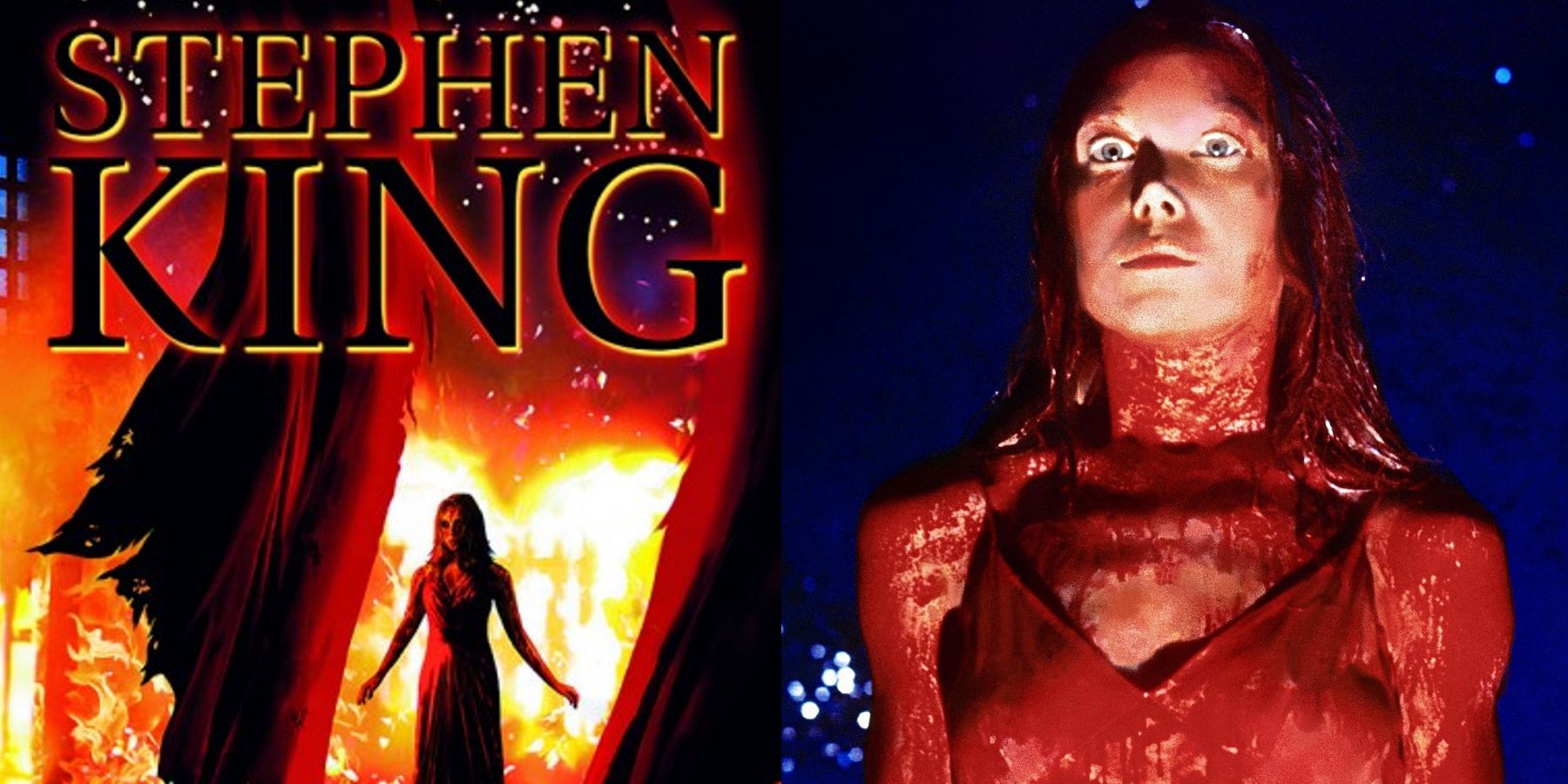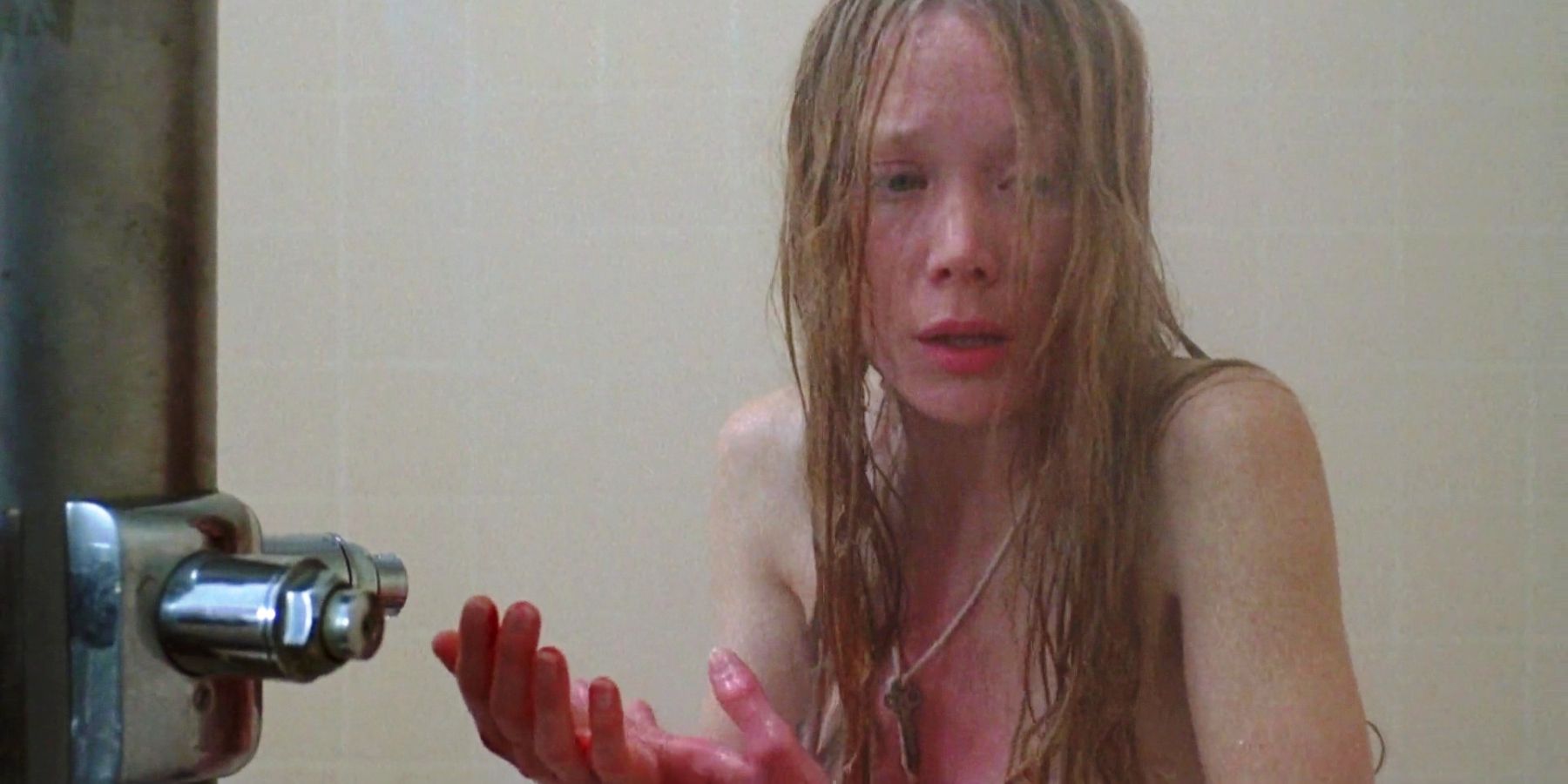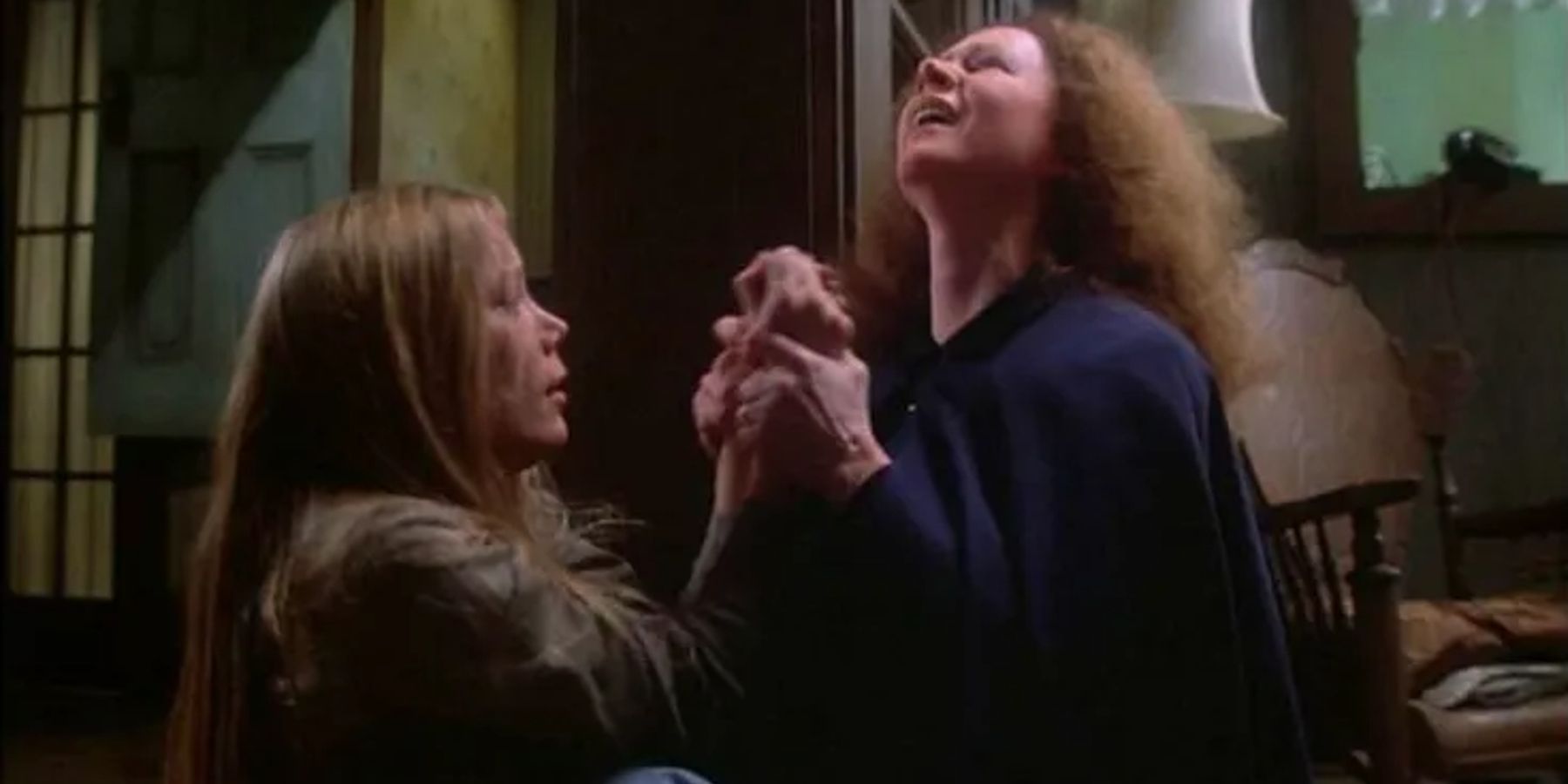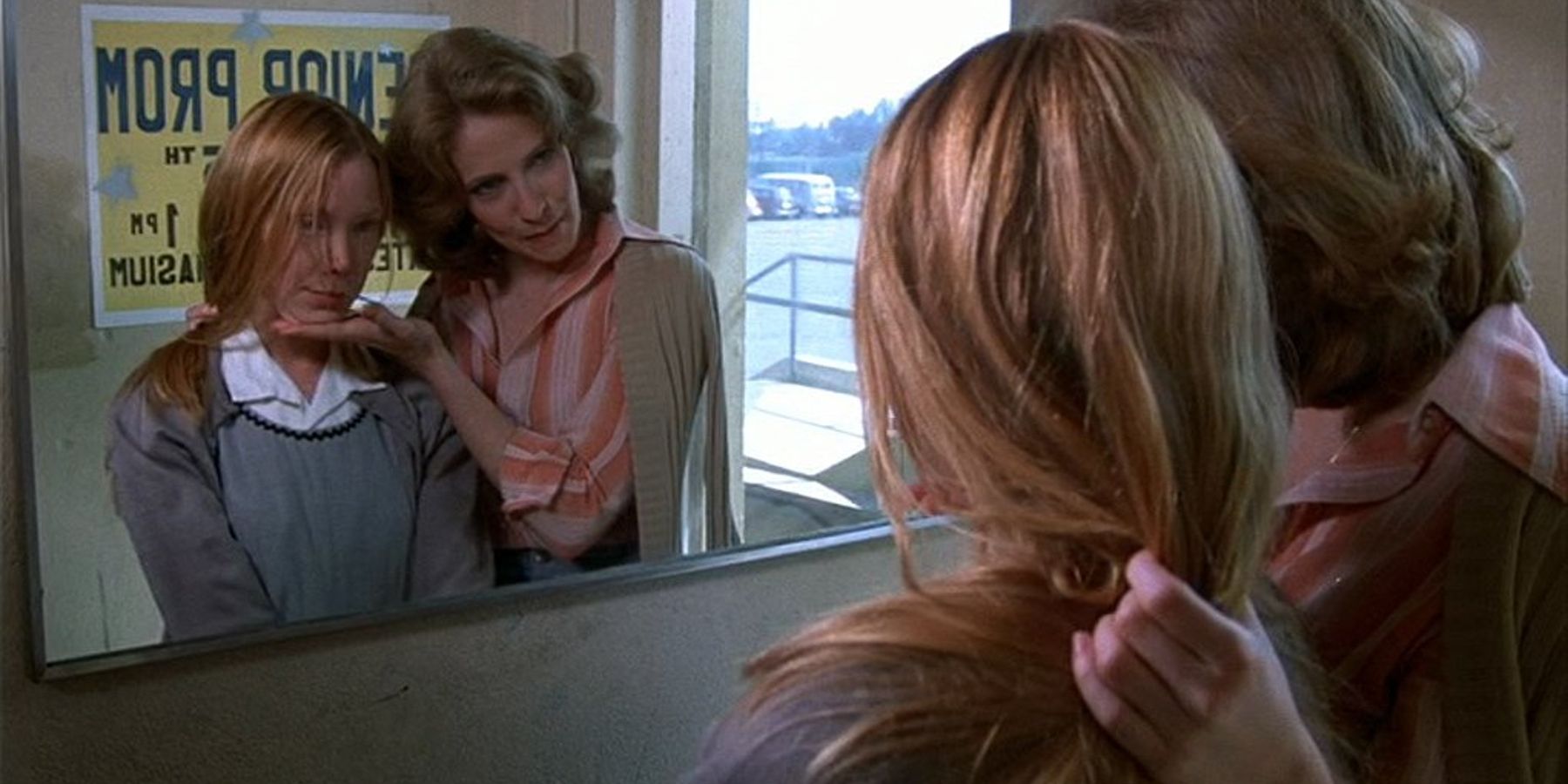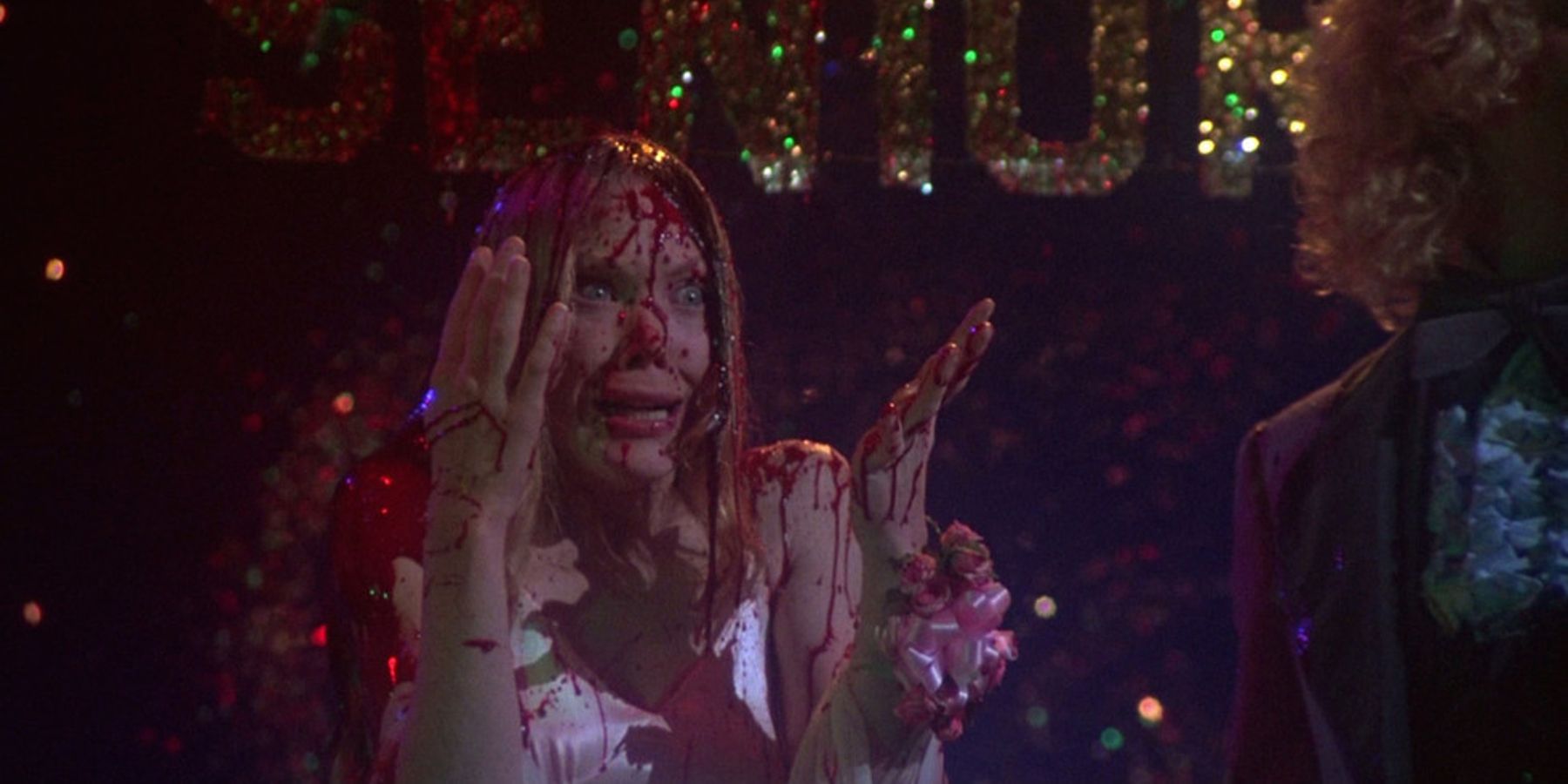Everyone knows Carrie, the eponymous character of Stephen King's first published book. The story of Carrie White, a 16-year-old high schooler who discovers she has telekinesis and uses her power to exact revenge on her mean classmates and abusive religious mother, is iconic; and it's hard to believe it almost ended up in the trash. If it weren't for King's wife encouraging him to continue writing Carrie, we wouldn't have the movie adaptations that followed: most famously, Brian De Palma's horror classic of the same name.
Carrie is one of the most commonly banned books in US schools, so it's fitting such a controversial director as De Palma would choose to adapt it. De Palma pulled out all the stops with Carrie, which was met with instant success upon its release in 1976. The first King book to be made into a movie, it is remarkable for being one of the few horror movies to receive two Academy Award nominations for acting (for Sissy Spacek and Piper Laurie, who played Carrie and Margaret White, respectively) and for being not only one of the best horror movies ever made but one of the best King adaptations too — and there are plenty of those. But those who haven't read the book might be surprised to learn how different it is from the movie.
The Storyline
Carrie uses fictitious newspaper articles, interviews, letters, and passages from books to foreshadow the story. These excerpts interrupt the third-person narrative to talk about the prom night massacre yet to come, creating a sense of foreboding. While the book is non-linear because of this, the movie follows a linear storyline that is more straightforward. Understandably, it would be difficult to replicate the format of the book on-screen.
That being said, both book and movie follow the same basic narrative: Carrie gets her period, realizes her power, is asked to prom, has pig's blood dumped on her, and murders her classmates and mother. The movie focuses mostly on the mother-daughter relationship between Margaret and Carrie, and backstories are cut for the sake of runtime.
One major event that didn't occur in the movie is the rain of stones, referring to when a three-year-old Carrie was being abused by Margaret for looking at their bikini-clad neighbor and scared her mother half to death by summoning giant hailstones from the sky to destroy their home. De Palma famously shot the sequence but ended up scrapping it because it didn't look right on camera.
Carrie and Margaret
One major difference between the book and the movie is Carrie and Margaret's appearance. In the book, Carrie is described to be an overweight girl with acne and "bovine reactions," making her a prime target for bullies. In the movie, Carrie is slim and has clear skin, though they both have pale blonde hair. And although Sissy Spacek is far prettier than the Carrie that King describes, she's arguably creepier, and it's hard to imagine anybody else playing the part.
Similarly, Margaret is described in the book as an overweight woman with white hair who wears rimless bifocals and shapeless black clothing. Piper Laurie's Margaret, on the other hand, doesn't wear glasses and is slim with auburn hair. Still, she is terrifying in her own way.
The book places much more emphasis on Carrie's powers and she frequently "flexes" them prior to the massacre. And while the book makes it clear that Carrie has had her powers for some time — at least since the rain of stones incident — the movie makes it seem as if they were new to her. Additionally, telekinesis isn't Carrie's only power in the book; she can also communicate with people telepathically, though the movie overlooks this. The movie also overlooks Margaret's backstory, which is quite important in understanding her character.
People who have only watched the movie won't know anything about Margaret's estrangement from her parents, her insurmountable guilt over her past sins, and her rape by Ralph (Carrie's father) — the latter is only alluded to in Margaret's movie monologue. Margaret's abuse of Carrie is also toned down in the movie, meaning viewers don't get a true insight into how terrifying she can be.
The Supporting Characters
The supporting characters also differ in the book and movie. For a start, Sue Snell (played by Amy Irving) is a much more prominent character in the book, and her memoir about prom night is an important text. She also seems to be more sympathetic in the book, though that may just be because her character is given more time to grow. Whereas Movie Sue appears constantly bewildered, as if she can't believe what's unfolding, Book Sue is a lot more aware, and she even has a premonition about prom night. Tommy Ross (played by William Katt) is more prominent in the book, too, and his character is less giggly (dare we say annoying) and more sensitive and smart here.
The characters who undergo the most significant changes, however, are Billy Nolan (played by John Travolta) and Miss Desjardin, renamed Miss Collins in the movie (Betty Buckley). In the book, Billy is a true sociopath who has violent fantasies and runs over stray dogs for fun, whereas in the movie, he's portrayed as a generic meathead. Likewise, Chris Hargensen (played by Nancy Allen) is more evil in the book, though readers are more likely to have sympathy for her as they're given the bigger picture of her relationship with Billy.
Billy is increasingly aggressive towards Chris, and he even rapes her, though this isn't shown in the movie. Miss Desjardin is a morally grey character in the book who initially shares the other girls' disgust of Carrie. When Carrie is bleeding in the shower, Miss Desjardin slaps her out of anger, whereas Miss Collins slaps her in a more "helpful" snap-out-of-it kind of way. Miss Desjardin feels guilty for lashing out at Carrie and is nice to her at prom, but Miss Collins goes the extra mile and becomes Carrie's stand-in fairy godmother.
The Prom and Ending
De Palma's Carrie takes many creative liberties with the ending. Things happen in the movie which don't happen in the book, and vice versa. In the movie, Sue attends prom — and is thrown out after finding Chris and Billy about to pull their prank — whereas, in the book, she stays home and has a horrible feeling something bad is about to happen. Whilst the movie version is more entertaining to watch, the book version is more ominous and characteristically King. You'll see this is about to become a recurring theme.
In both the book and movie, Carrie is covered with pig's blood and Tommy dies after being hit on the head by a bucket, but after that, the narratives diverge. In the book, Carrie leaves prom before returning to kill everyone, whereas in the movie she doesn't hesitate to react. In the movie, Miss Collins dies, whereas Miss Desjardin lives but is so guilt-ridden about the massacre that she retires, and Carrie kills Chris and Billy (in a car accident, similar to the book) before heading home.
At home, Margaret stabs Carrie in the back, and Carrie retaliates by sending knives flying at her mother, gruesomely crucifying her. They both die as the house collapses and burns down with them inside. In the book, Margaret stabs Carrie in the shoulder, and Carrie murders her mother by stopping her heart. Carrie crawls her way to the roadhouse where she was conceived, meets Chris and Billy and murders them, then telepathically communicates with Sue who finds her bleeding out, dying. Carrie forgives Sue, after realising she meant no harm, and Sue literally feels Carrie die.
At this point in the book, the whole of Chamberlain, Maine, the fictional town where Carrie is set, is burned to the ground. Carrie set fire to everything in her path and killed 440 people. This is a fact completely left out of the movie, and another example of the movie not showcasing the full potential of Carrie's powers. The movie ends with a jump scare of Sue having a nightmare about visiting Carrie's grave and Carrie's arm reaching out to grab her. The book instead ends with a letter from a woman to her sister, in which she explains her daughter's unusual ability to move marbles without touching them. Both endings have merit, though King — ever modest — prefers the former.

